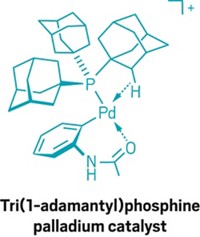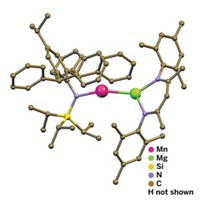Advertisement
Grab your lab coat. Let's get started
Welcome!
Welcome!
Create an account below to get 6 C&EN articles per month, receive newsletters and more - all free.
It seems this is your first time logging in online. Please enter the following information to continue.
As an ACS member you automatically get access to this site. All we need is few more details to create your reading experience.
Not you? Sign in with a different account.
Not you? Sign in with a different account.
ERROR 1
ERROR 1
ERROR 2
ERROR 2
ERROR 2
ERROR 2
ERROR 2
Password and Confirm password must match.
If you have an ACS member number, please enter it here so we can link this account to your membership. (optional)
ERROR 2
ACS values your privacy. By submitting your information, you are gaining access to C&EN and subscribing to our weekly newsletter. We use the information you provide to make your reading experience better, and we will never sell your data to third party members.
Synthesis
Chelating carbene ligand unveiled
June 11, 2007
| A version of this story appeared in
Volume 85, Issue 24
The planar chelating bitriazole molecule shown is the latest addition to the versatile family of N-heterocyclic carbene (NHC) ligands. Created by Robert H. Crabtree of Yale University; Eduardo Peris of University Jaume I, in Spain; and colleagues, the bitriazole is an analog of the popular 2,2' -bipyridine ligand and expands the range of NHC electronic and steric properties (Chem. Commun. 2007, 2267). The ligand forms in situ when a precursor bitriazole reacts with a standard rhodium complex. Depending on reaction conditions, catalytically active rhodium complexes containing one or two of the chelating ligands are produced, including an unusual dirhodium complex in which the two rhodium atoms and the ligands form unprecedented six-membered chelate rings. NHCs typically are strong electron donors to transition metals, but the new ligand's donating power is significantly weaker, placing it slightly lower than that of 2,2′-bipyridine and bis(dimethylphosphino)ethane, Crabtree points out. This property and the rigid, planar structure that arises from the N–N bond linking the azole rings may increase the utility of NHC ligands, he says.






Join the conversation
Contact the reporter
Submit a Letter to the Editor for publication
Engage with us on Twitter